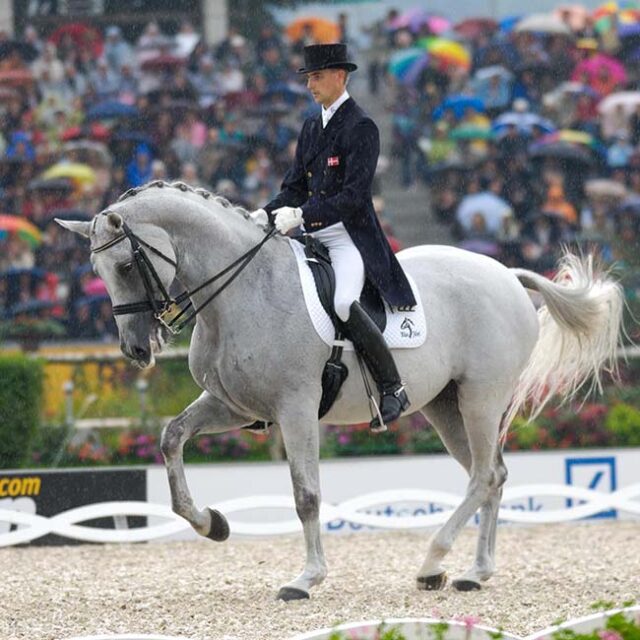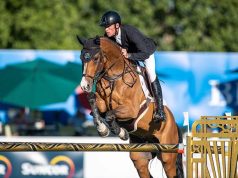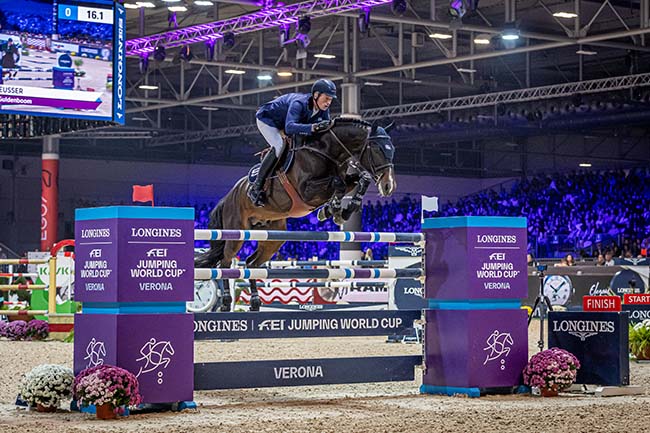By Christopher Hector
Photography: Peter Llewellyn
Breeding News for Sport Horses first published an interview with Andreas Helgstrand in May 2018 when he was acknowledged as being one of the most successful dressage riders in the world. Already recognized as a breeder/producer of world-class dressage horses, he has since partnered with another captain of the breeding industry Paul Schockemöhle.
Andreas Helgstrand has become one of the most influential people in the world of sport horse breeding. His mega stallion station, Helgstrand Dressage, in association with Paul Schockemöhle, stands some of the most important and popular stallions in the world. Editor’s note: At the time of his first interview with BN correspondent Agata Grosicka, Helgstrand admitted that his association with horses began at a very young age as a showjumper. Since then, his career as a successful Olympic, World, and European championship dressage rider speaks for itself, This month, Christopher Hector caught up with Andreas to find out how he finds new stallions...
Q You have an extraordinary record of finding stallions, if I ask about all of them we could go for hours, but what are the most important stallions you have discovered?
That’s really hard to say, we have 50, they all have some good things and some bad things. For a breeding stallion they have to be a natural mover, not that you need to make them move. A good stallion is born with good walk, trot, canter, and rideability, this is one of the most important things. I’m looking at three gaits, that’s very important. Long lines, that they are not too tight in the body, they have something to give further. Then later on when you start riding them, the rideability is everything. Without that, forget it. We see so many good movers and they are still not easy to ride, they need to have a good mouth, good rideability. The best horses nowadays have no weakness, so we need to go in that direction. They need to be healthy, standing straight on the legs. I know everyone says the same thing, but if you always keep in mind that the best today have no weakness, they are doing piaffe, passage, they are standing still, they are walking, they are doing all these exercises, that's what you need to look for.
Q Is rideability the reason for the Vivaldi boom at the moment?
I don’t know that there is a Vivaldi boom at the moment?
Q I think so, in Germany...
Which ones?
Q Vitalis in particular...
True, but let’s say now, Vitalis is still interesting but he’s already an older stallion and he now has hundreds of offspring, so you now have the option for some of the newer ones. Of course, Vitalis made a fantastic, super breeding stallion, but it is important not to stay there, move all the time. What we always try to do is buy the best ones in the new age groups. We try to get new bloodlines in all the time from the younger stallions because then you are moving the breeding. I have many questions, I would like to use the old famous stallions, Jazz, Don Schufro, Sandro Hit, but then you are not moving anything, then you are already 20 years behind. That’s the same when you do a lot of ICSI embryo blah, blah, blah, it’s good, I do it myself on the better mares, but we always have to remember that breeding goes so fast that if you have been out of it, three to five years, you cannot realize how good they are now.
Q When you are looking for rideability, are you looking for any particular names on a pedigree?
It’s more that I am aware if the father is difficult in his character – and there are a few stallions in the market that I know their fathers were super difficult to ride – then I’m a little bit worried. Of course that’s not all of them, some will turn out very good, but when I know the father was very difficult to ride, then I am always a bit sceptical.
Q On the positive side do you like to see, say Rubinstein, on the pedigree?
‘R’ blood is often easy to ride and they are very nice horses, but they are also often a bit heavy and a bit strong in the mouth, so I think you cannot use these older names any more. What you need to look for are the horses that are eight to ten years old now, the ones that are 20 or more, forget it because they are no longer useful. If you look back, you mentioned Vivaldi, if you look at him now, and take him up in front of some of the younger ones, you will say, look how far the breeding has come, but at that time, wow, he was super. It’s fantastic for breeding that the development comes so fast... To read the complete article you need to be a subscriber
CLICK HERE TO SUBSCRIBE TO BREEDING NEWS
SUBSCRIBERS CAN READ THE COMPLETE ARTICLE BY LOGGING IN AND RETURNING TO THIS PAGE




